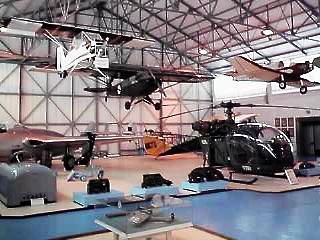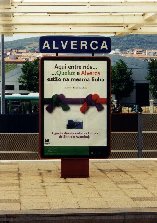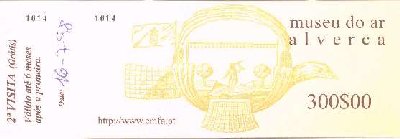Portuguese Air Museum website
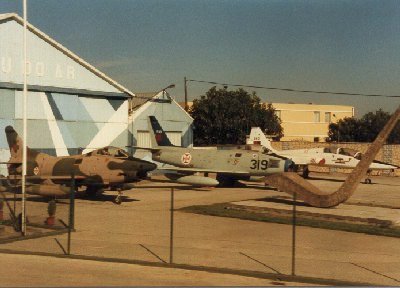
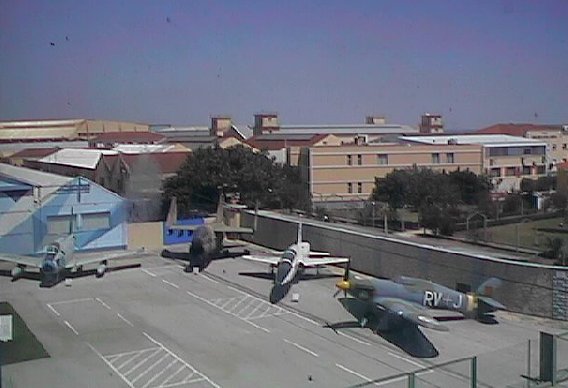
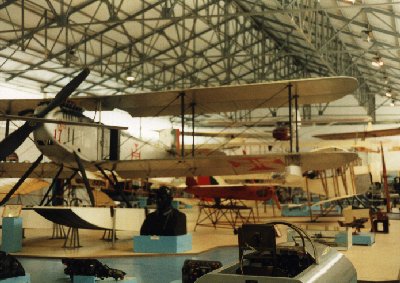
L to R: Views of the outdoor display at the Museu do Ar, as seen (left) from
the railway line to Santarém and, next, from Alverca Station; far right, a
replica of a Fairey aircraft used by Coutinho and Cabral in the first crossing
of the South Atlantic, 1922.
Origins and Developments
The Alverca air museum (3000 sq. metres) opened on 1 July 1971 with exhibits which included a
D.H. Vampire, donated by the South African Air Force and replicas which included
the 'Santa Cruz' Fairey IIID aircraft of Gago Coutinho and Sacadura Cabral-
the original of the last of the three Faireys used in this epic trip is
displayed in the Lisbon Maritime Museum at
Belém. Today, the Alverca museum occupies 3000 sq metres of indoor
and outdoor display areas. Of 112 aircraft owned by the museum,
some nineteen are on display, along with aero engines and other aircraft parts. There is also a
wealth of model aircraft, uniforms and memorabilia. The display hangar
comprises a modern installation of aircraft, some of which
are suspended from the roof. Amongst the aircraft to be seen are replicas
of a Blériot IX, the first aircraft to fly in Portugal, and a
replica of the Demoiselle (1909), one of the pioneering Brazilian aviator, Santos Dumont's
aeroplanes. Other exhibits include a Spitfire Mark V in
Portuguese Air Force camouflage livery. The more modern era is represented
by a mock-up of POSAT-1, the first Portuguese satellite (1993). There
is a magnificent collection of painted model aircraft kits covering the
history of aviation throughout the world. In two adjoining rooms are
numerous display-cases showing artefacts of celebrated Portuguese aviators.
Outside the museum is a selection of Portuguese Air Force exhibits, which
includes a Hawker Hurricane (apparently, a fibreglass replica), a Fiat G91
and a Northrop T-38A Talon. The adjacent Alverca military airfield is still active
with C-130 Hercules amongst the types to be seen. The museum costs only 3 Euros to enter for adults (2012). Pensioners' tickets are cheaper. A small range of souvenirs may be purchased at the
entrance desk in the foyer.
Museu do Ar, Sintra
This is now the main site of the museum but it is not easily accessible by punlic transport. Its address is Museu do Ar, Granja do Marquês - 2715-021 Pero Pinheiro, Sintra. GPS: 38º 50'12N 009º 20'19W
Admission is 3 Euros (2012). A list of displayed aircraft at all of the sites is here.
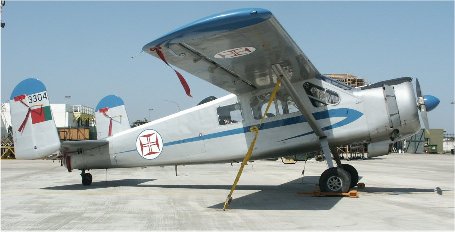
Above: Max Holste Broussard at Sintra. Picture , courtesy of Adrian Balch.
The main museum reopened on June 29, 2012. This was the site of Lisbon's commercial airport in the early part of World War II where, because of Portugal's neutrality, British and Nazi aircraft could be seen side by side. It is open from 1000-1700 at weekends but prior arrangements must be made. These can be made via the Tourist Office in Sintra. Entry is free.
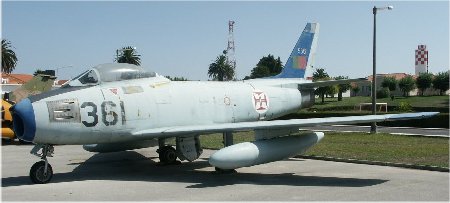
Above: North American F-86F Sabre at Sintra. Picture, courtesy of Adrian Balch.
Sintra houses 22 aircraft of which 10 are in airworthy condition, including a 1935 Avro Cadet.Exhibits include a Cessna T-37, North American F86F Sabre, Lockheed T-33A, Lockheed RT-33A, Northrop T-38A Talon, two Fiat G.91R, an A-7P Corsair, a Lockheed Neptune, Douglas Dakota, Piper Cub, two Harvards, two Tiger Moths, a Hornet Moth, a Sikorsky UH-19, a Dragon Rapide, a Dornier Do-27, a Holste Broussard and an Auster.
*Thanks to Adrian Balch for this information, (Sept. 2004).
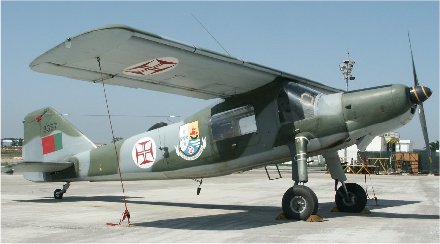
Above: Dornier Do-27 at Sintra. Picture, courtesy of Adrian Balch.
Museu do Ar, Ovar
South of Oporto, near Aveiro, this part of the museum is at Aeródromo de Manobra nº1, Rua da Base Aérea - 3885-718 Maceda. GPS: 40º55'08"N 08º38'21"W
Other Information

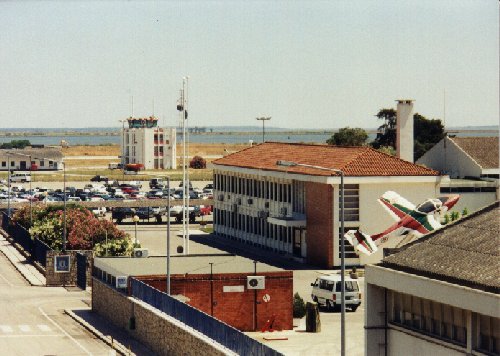
 17 September 2012 (partly)
17 September 2012 (partly)


